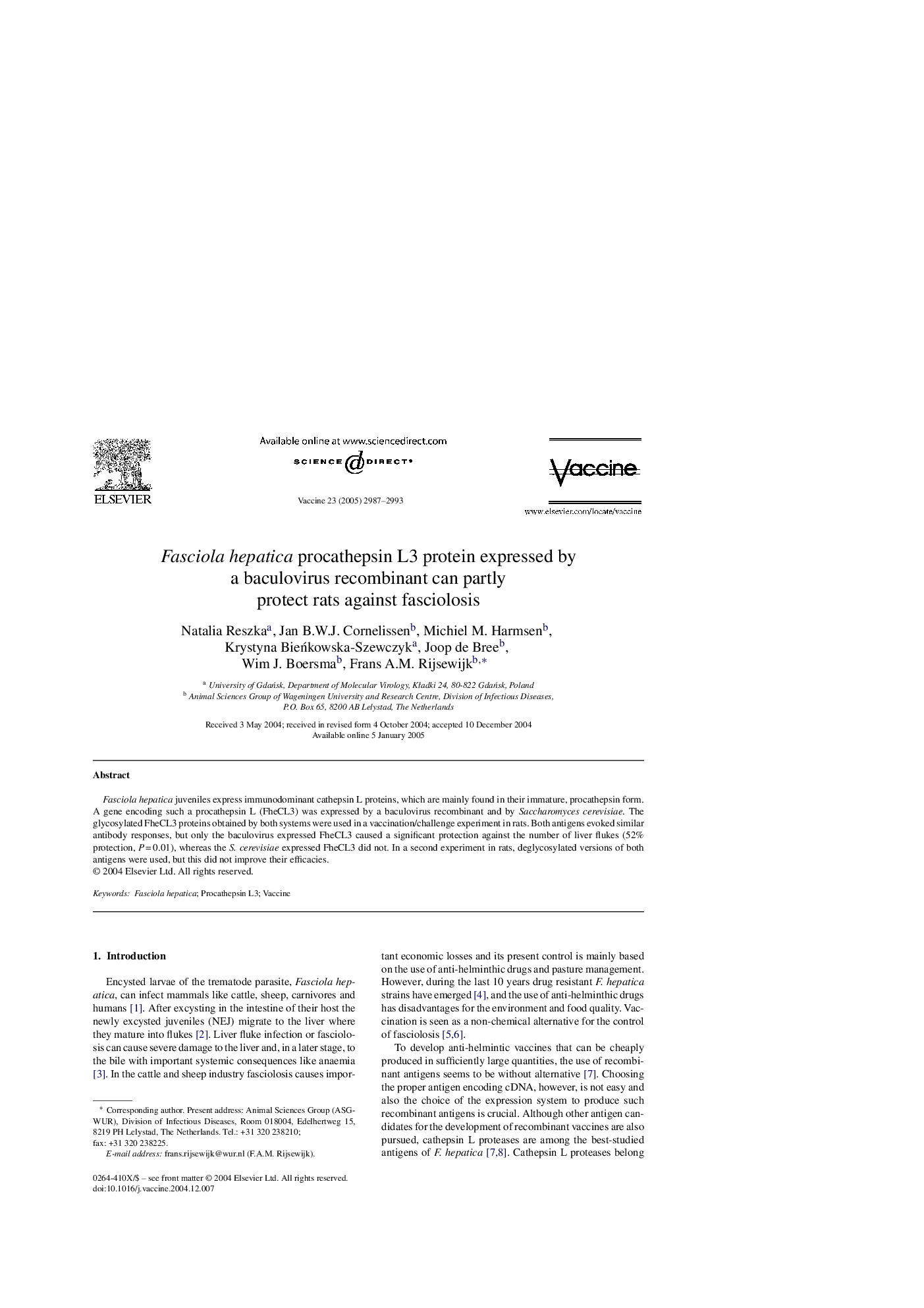| Article ID | Journal | Published Year | Pages | File Type |
|---|---|---|---|---|
| 2410602 | Vaccine | 2005 | 7 Pages |
Abstract
Fasciola hepatica juveniles express immunodominant cathepsin L proteins, which are mainly found in their immature, procathepsin form. A gene encoding such a procathepsin L (FheCL3) was expressed by a baculovirus recombinant and by Saccharomyces cerevisiae. The glycosylated FheCL3 proteins obtained by both systems were used in a vaccination/challenge experiment in rats. Both antigens evoked similar antibody responses, but only the baculovirus expressed FheCL3 caused a significant protection against the number of liver flukes (52% protection, P = 0.01), whereas the S. cerevisiae expressed FheCL3 did not. In a second experiment in rats, deglycosylated versions of both antigens were used, but this did not improve their efficacies.
Keywords
Related Topics
Life Sciences
Immunology and Microbiology
Immunology
Authors
Natalia Reszka, Jan B.W.J. Cornelissen, Michiel M. Harmsen, Krystyna Bieńkowska-Szewczyk, Joop de Bree, Wim J. Boersma, Frans A.M. Rijsewijk,
